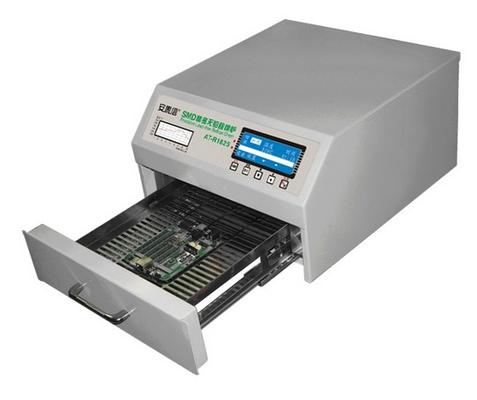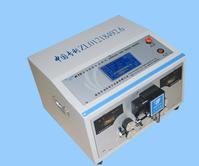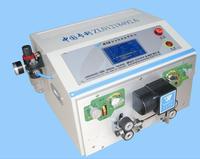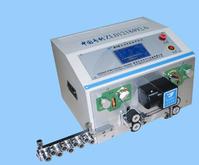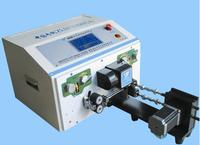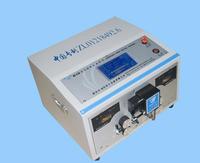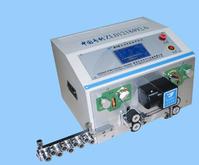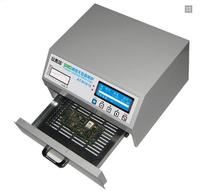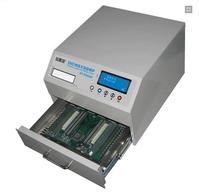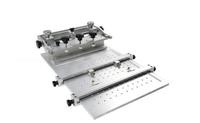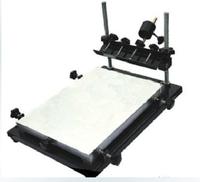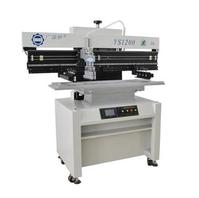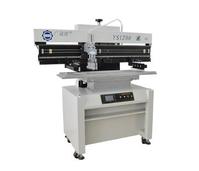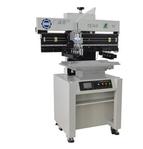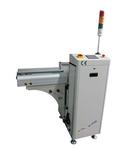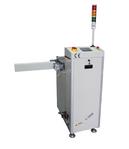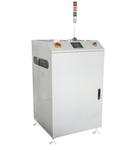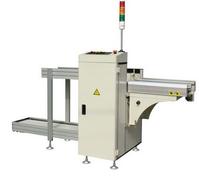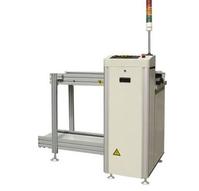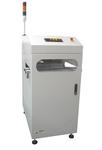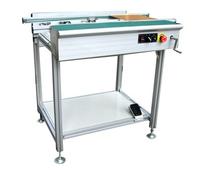Desktop Reflow Oven R1825
Company Information:
Name: |
Desktop Reflow Oven R1825 |
Category: |
|
Offered by: |
|
Desktop Reflow Oven R1825 Description:
This oven is used for electron production and maintain of SMT technique. The product adopts the far-infrared heating components and excellent sense temperature materials. Through the precise control of the microcomputer, make the temperature control curve match to the request of the SMT production technique completely. The “temperature control curve” of the equipment can be adjusted accurately, so it can satisfy the request of many kinds of soldering paste which are different material parameters. It can shut down and alarm the faults automatically. Also it has many functions, such as soldering, maintenance and drying.
The structural performance and operation has been upgraded and improved. Using Chinese-English bilingual operating system and efficient and convenient power switch
Main technique parameter
1.Working voltage: AC220V(AC110V order)
2.Working frequency:50-60Hz
3.Maximum output power: 600W
4.Heating methods: infrared radiation and hot air mix heating
5.Operating system: Chinese-English operating system
6.Working mode: automatic soldering mode, maintenance mode adjustable
7.Temperature curve paragraph: warm-up, heating, soldering, heat preservation and cooling segment.
8.Range of temperature and time on warm-up: 70~150℃, 0~5Min
9.Range of temperature and time on heating: warm-up temperature to 220℃,0~5Min
10.Range of temperature and time on soldering: heating temperature to 300℃, 0~30s
11.Range of temperature and time on heating preservation: soldering temperature-(0~50℃)
Effective soldering area: 220×280mm
12.Size: 428×350×220mm
The function of temperature curve
In the SMT production process,adjust the temperature curve according to different alloy formula or tin solder paste, which make the better quality of product. Usually the reflow soldering has five temperature segments. The temperature and the time can be set to satisfy the request of different PCB board. In order to better explain the requirements of the various temperatures and the role we will describe every temperature segment in the follow.
1.The purpose and role of the warm-up
Heating the PCB board from room temperature to 120~150℃ which make the moisture fully volatile and eliminate the internal stress and some residue gas of the PCB board. It is a gentle transition of next temperature paragraph also, setting the time 1~5Min in this segment. You also can set the time by the size of the board and the number of the components.
2.The purpose and role of the heating
Activated the liquid flux of tin pulp; under the role of the liquid flux remove the oxide of surface components inside the tin pulp; preparation for soldering. In this section the temperature of the lead alloy solder and precious metal alloy solder should be set (150℃~180℃). eg: Sn42%-Bi58% Indium tin alloy low temperature Lead Solder, Sn43%-Pb43%-Bi14% low-temperature lead solder and so on. Set the Mid-temperature lead solder alloy temperature between (180~220℃); Set the high temperature lead-free solder alloy temperature between (220~250℃). If you have solder and tin pulp information, the temperature of the heating can be installed in less than tin pulp melting point temperature of 10 ° C is the best around.
3.The purpose and role of the soldering
The purpose is to complete the SMT soldering. As this stage is the highest temperature in the whole soldering process, the components is easy to damage. This process the solder physical and chemical changes of the largest are also to the improvement of soldering process. The solder dissolves very easily in the high temperature oxidation in air. If you have solder and tin pulp information, you can installed the temperature of the soldering higher than tin pulp melting point temperature of (30~50° C). We divided the solder into three: low temperature solder(150~180℃),mid-temperature solder(190-220℃), high-temperature solder(230~260℃). Now commonly used lead-free solder materials for high-temperature solder, low-temperature solder is generally precious metals lead-free solder and the special requirements of low-temperature lead solder,General electronic products use rarely, it often use in specific requirements for electronic equipment. At present, many lead-free solder are also no substitute for lead solder as the mid-temperature leaded solder has excellent electrical properties, mechanical properties, impact resistance properties of hot and cold, the antioxidant properties, therefore, in a common electronic products also large-scale use.
In this segment you can set the time according to the requirement in the following. After high temperature melting solder shown as liquid all the components of SMT floating on the surface of the liquid solder. In the surface tension effects of the flux and liquid, floating components will be move to the center of the solder pad have the role of reform automatically. Also in the humid of the solder flux the solder tin and surface metal of components formed alloy layer infiltrated into components structural organization, which form the ideal soldering structural. Setting the time about (10~30s), a large area and the larger components shade of PCB should be set much longer time. The small area or less parts PCB set shorter time generally. In order to ensure quality of back solder in this stage should shorten the time as much as possible to protecting components.
4.The purpose and role of the heat preservation
Let high-temperature liquid solder solidified into solid-state soldering points. Solidification quality has a direct impact the crystal structure of the solder and mechanical properties. If the solidification to fast will lead the solder formation of crystalline rough, solder joint is not bright, mechanical properties decrease. Under high temperature and mechanical impact, soldering points easily crack lose mechanical and electrical connections role, lower product durability. We always use to stop heating methods and heat preservation for some time. In the temperature slow decline process the solder can solidification and crystal good. Generally set the temperature point lower than the solder point 10-20 ° C around. Use of natural cooling when the temperature dropped to the temperature point it will enter cooling paragraph.
5. The purpose and role of the cooling paragraph
This cooling segment is simple, usually cooled to the temperature will not scalding the people. To speed up the process of operation, may also stop the process when the temperature fell to below 150℃. To avoid burns to use tools, hand belt or heat resistant grove take out the PCB board.
6.Note
General temperature curve set from the low-temperature, after satisfy the soldering requirements as much as possible to reduce the soldering temperature. Also can through extend back soldering time to reduce the temperature, this will be conducive to the protection of low-temperature components, especially some connectors and plug. Some components can not satisfy temperature requirement, can be used to after soldering to solve.
Desktop Reflow Oven R1825 was added in Jun 2013
Desktop Reflow Oven R1825 has been viewed 877 times
20 More Products from HuiKe Tech :
